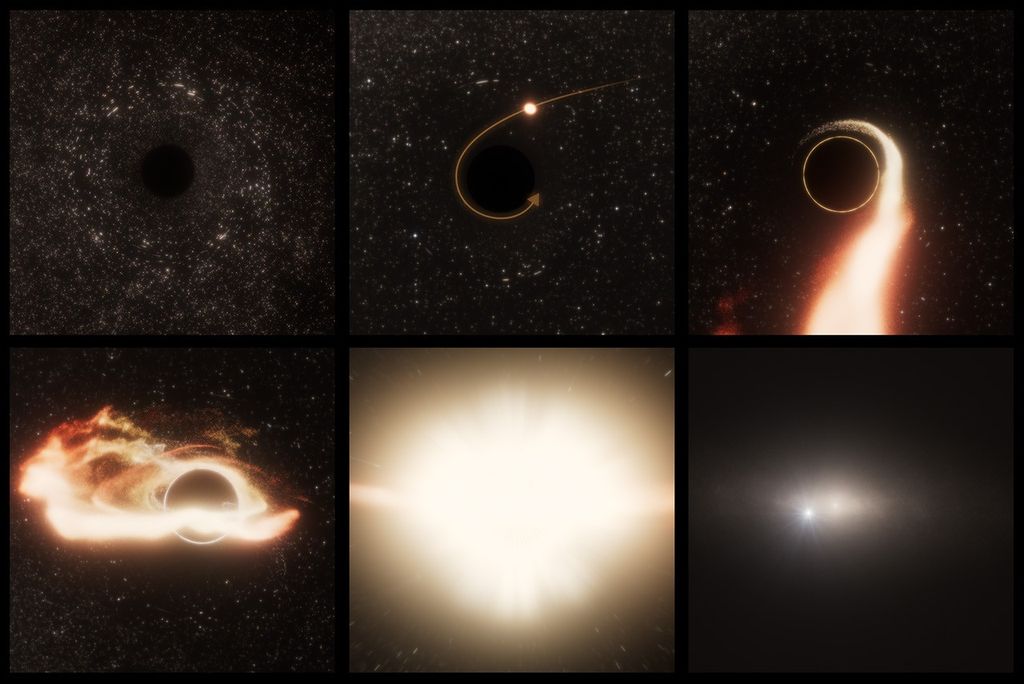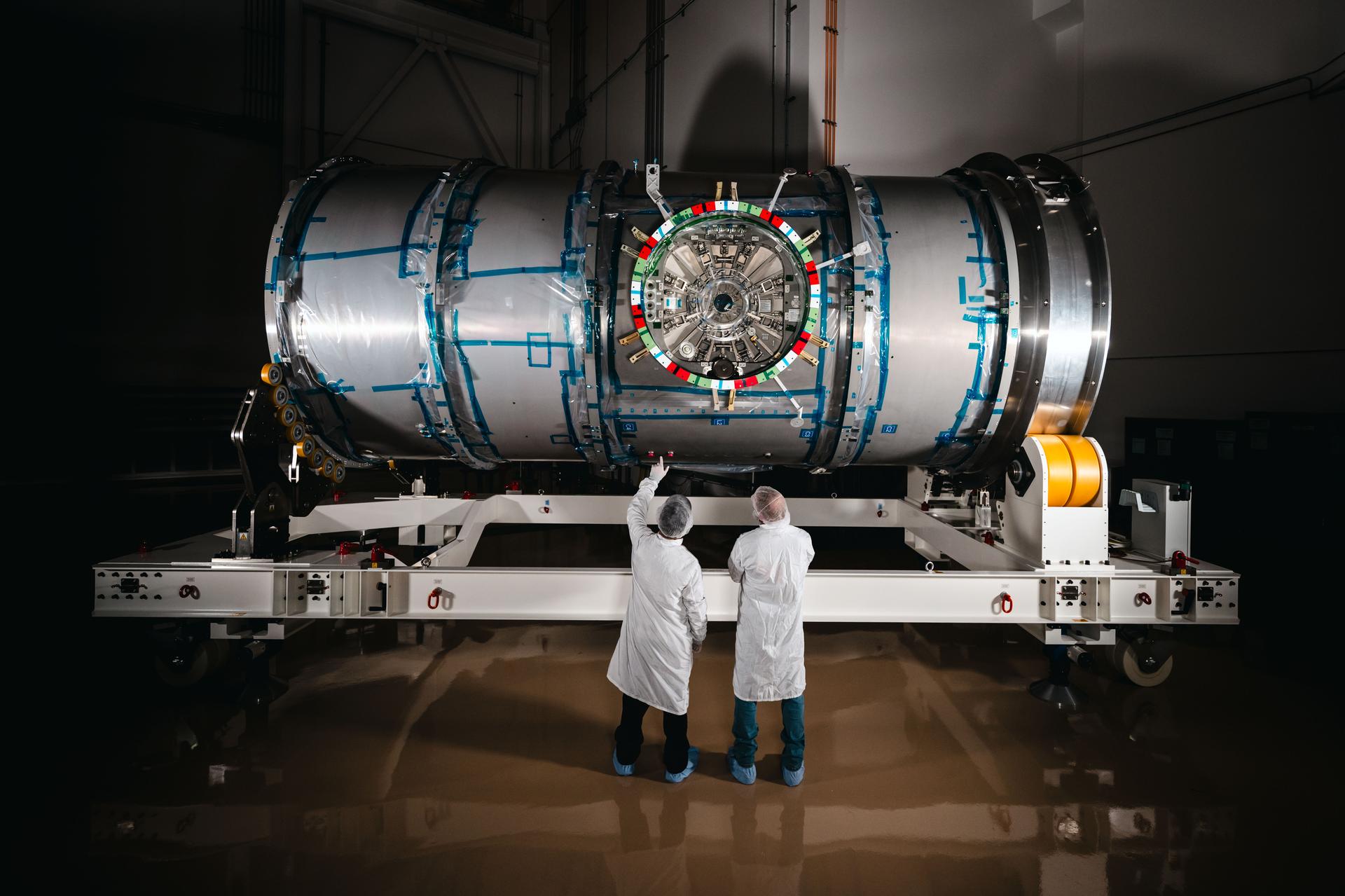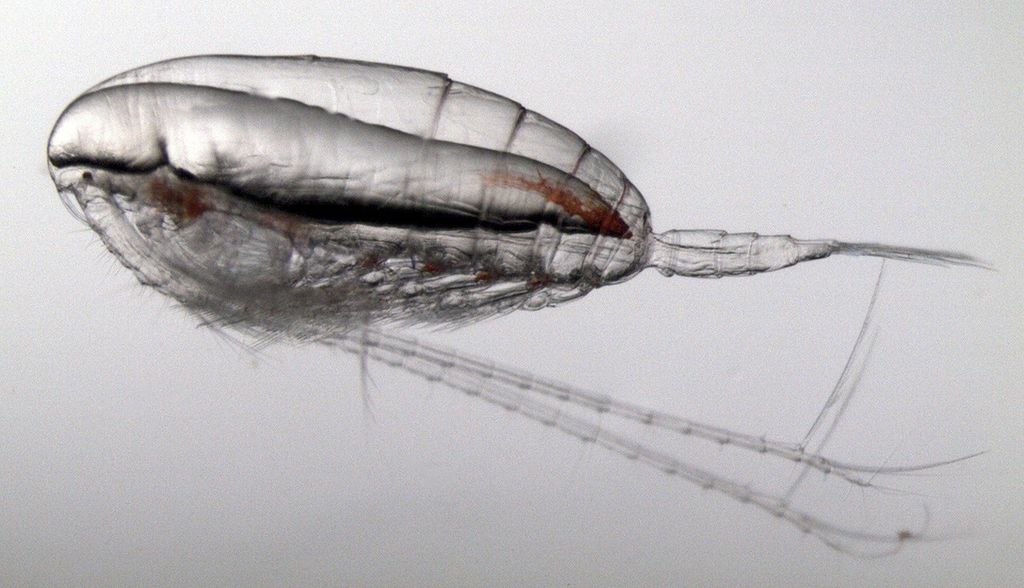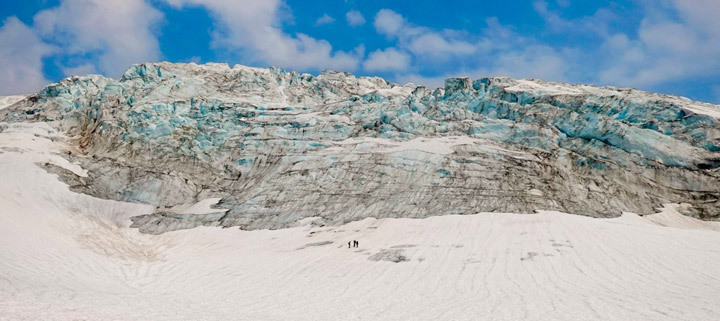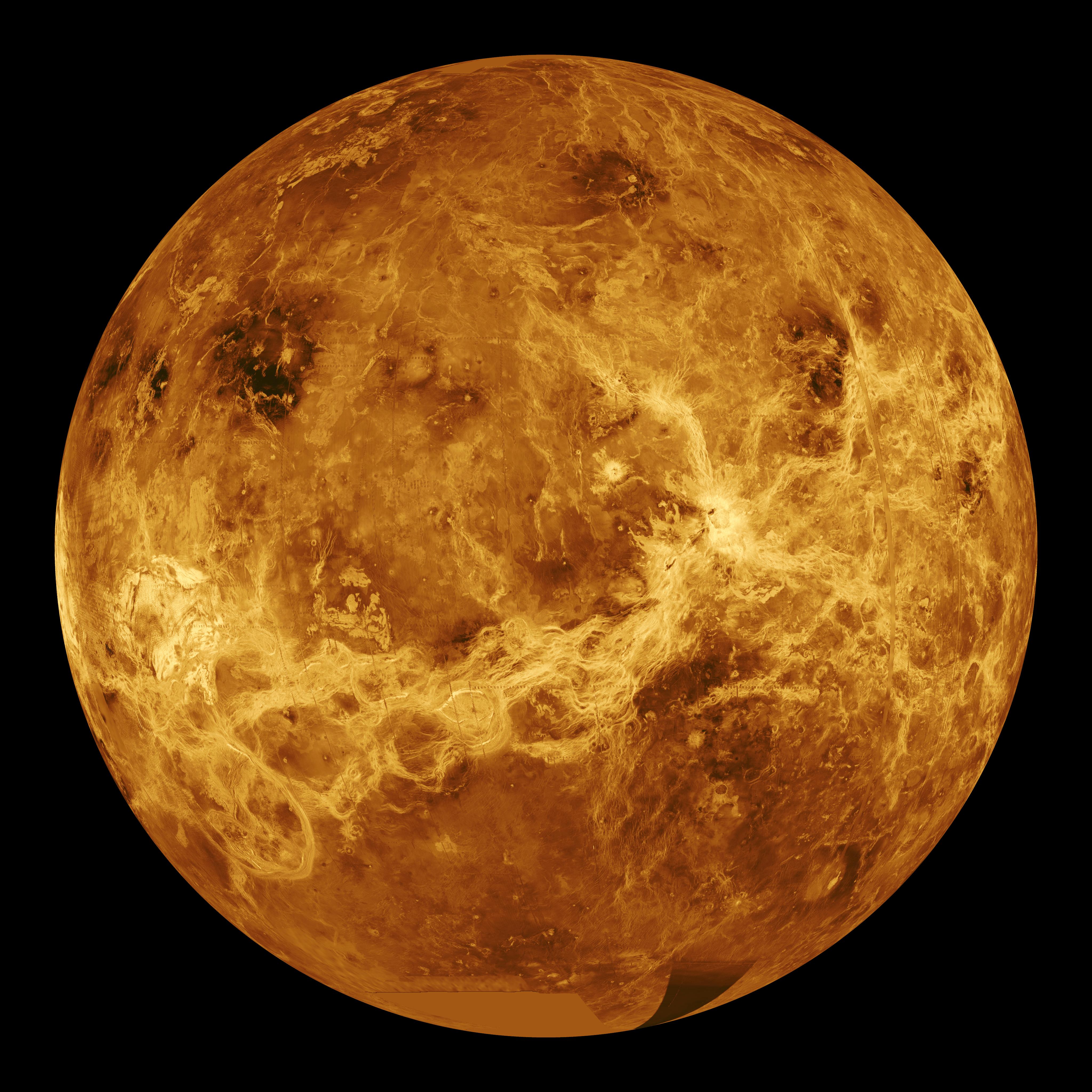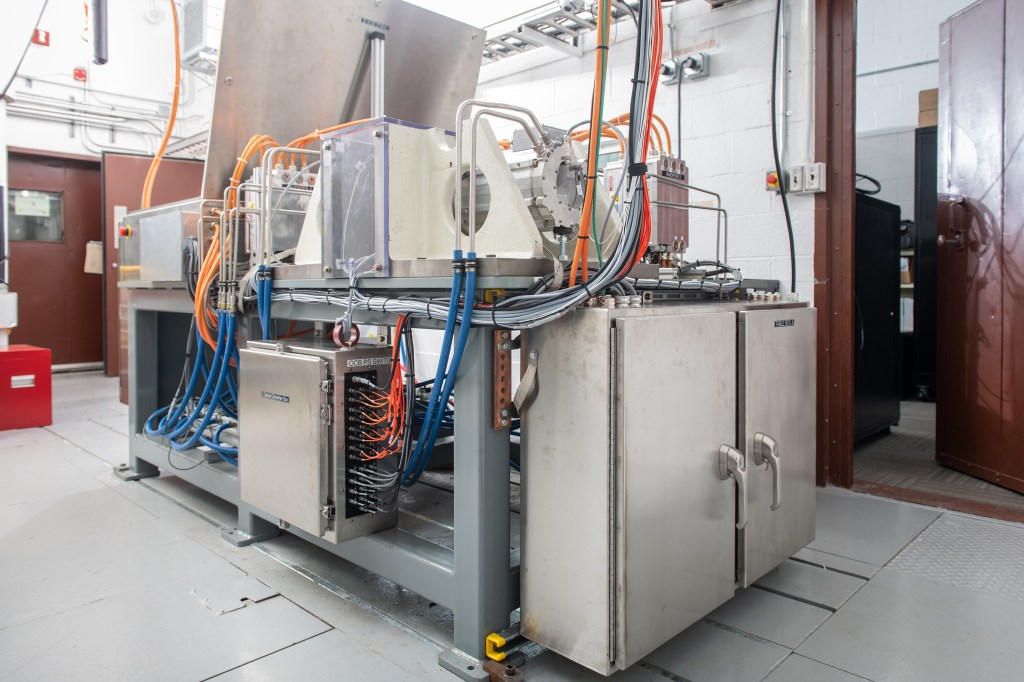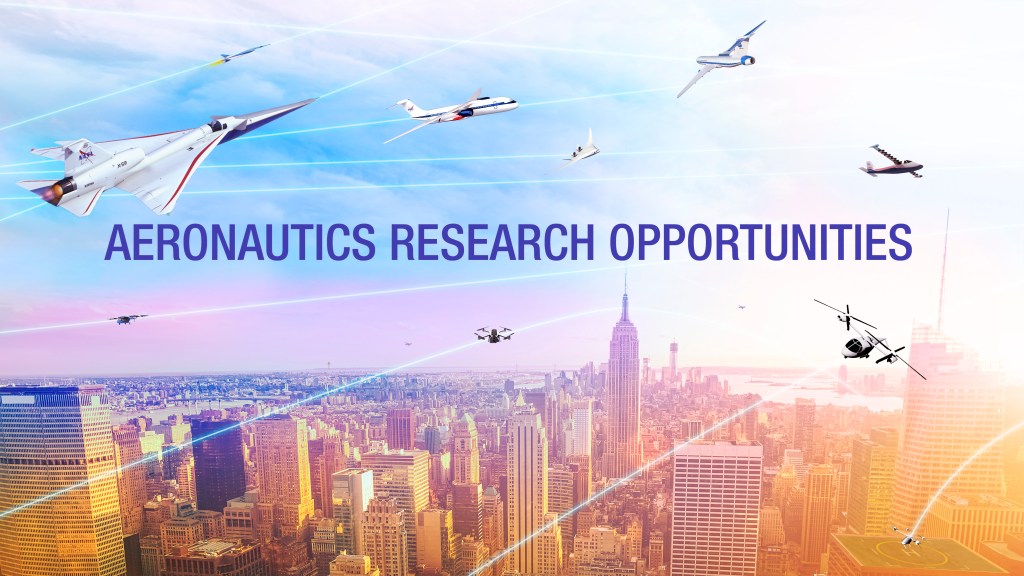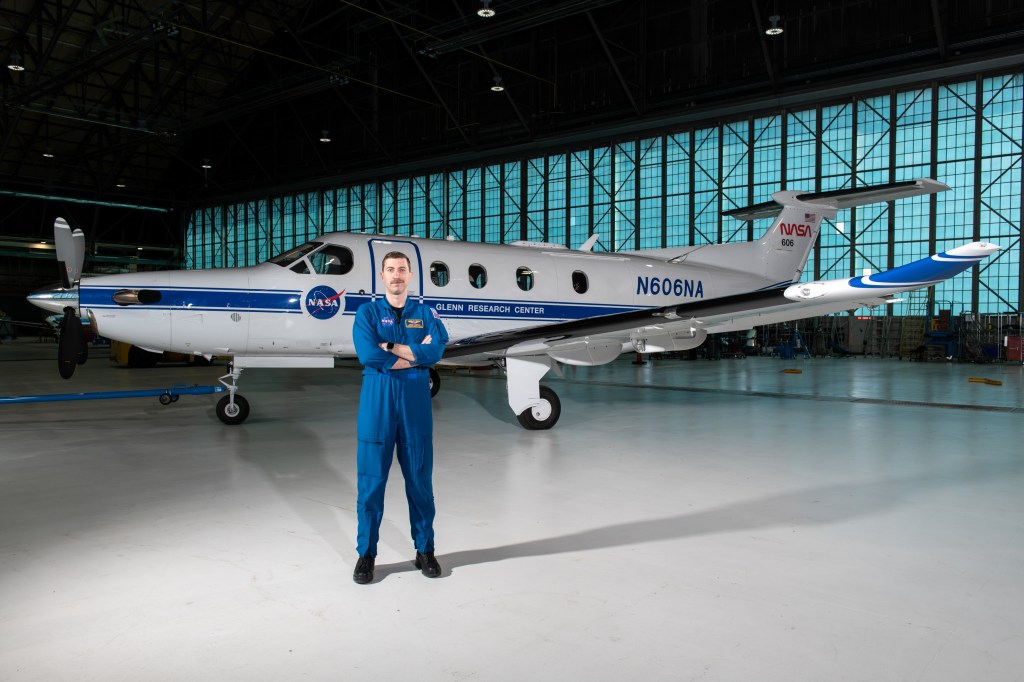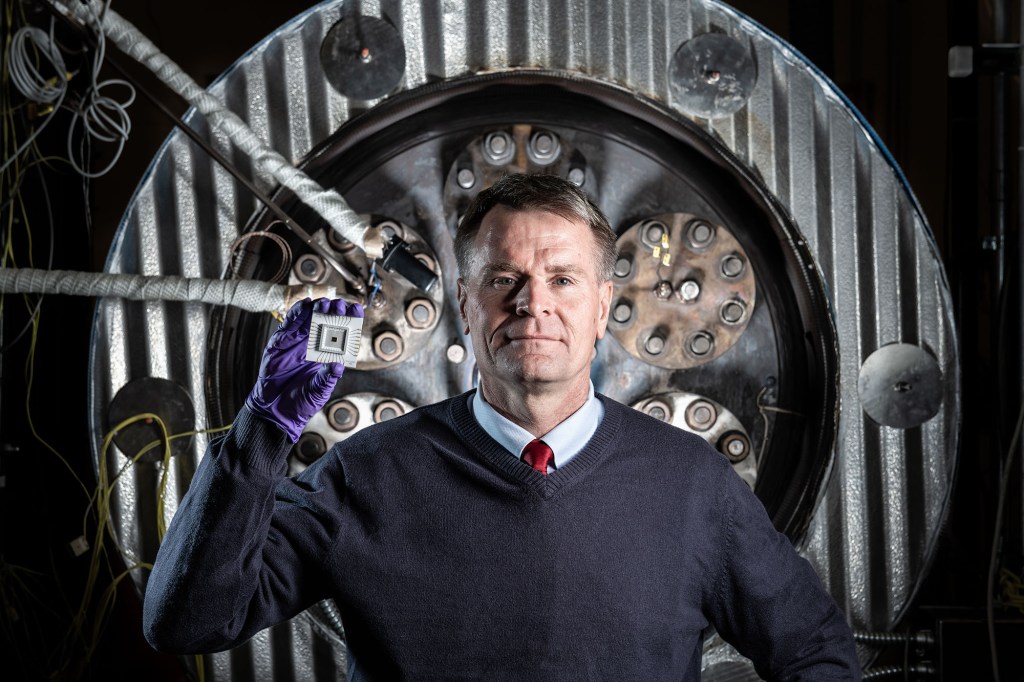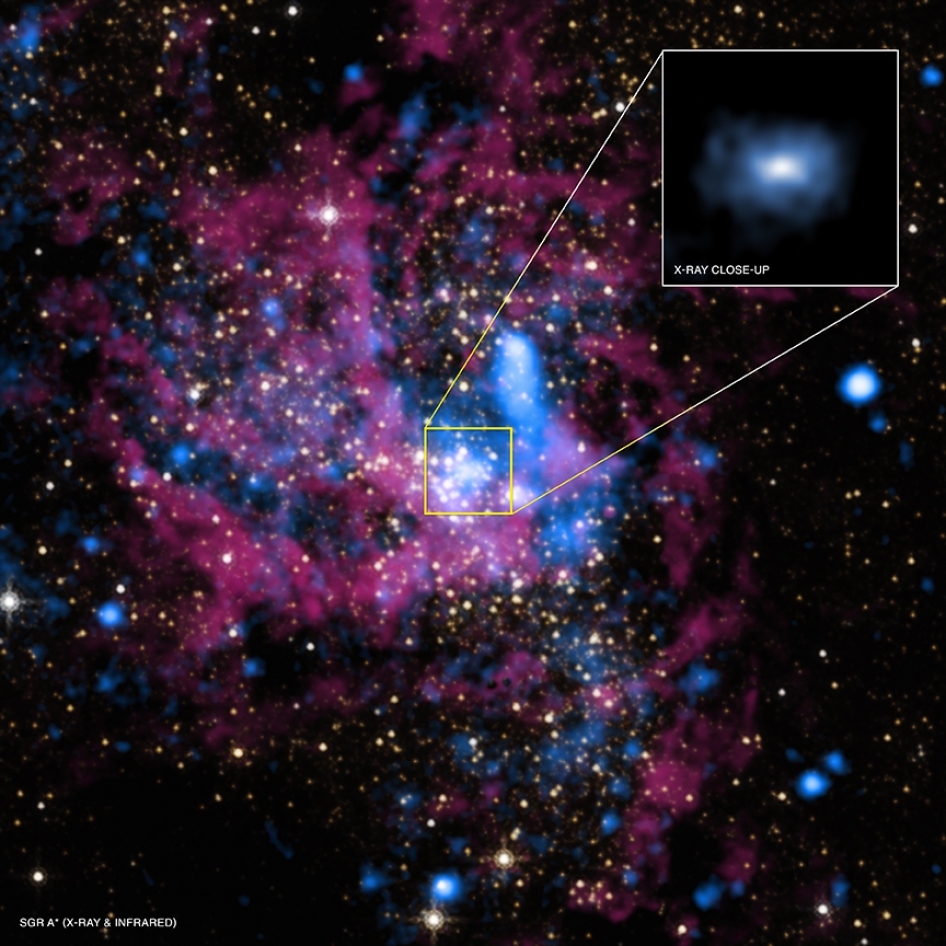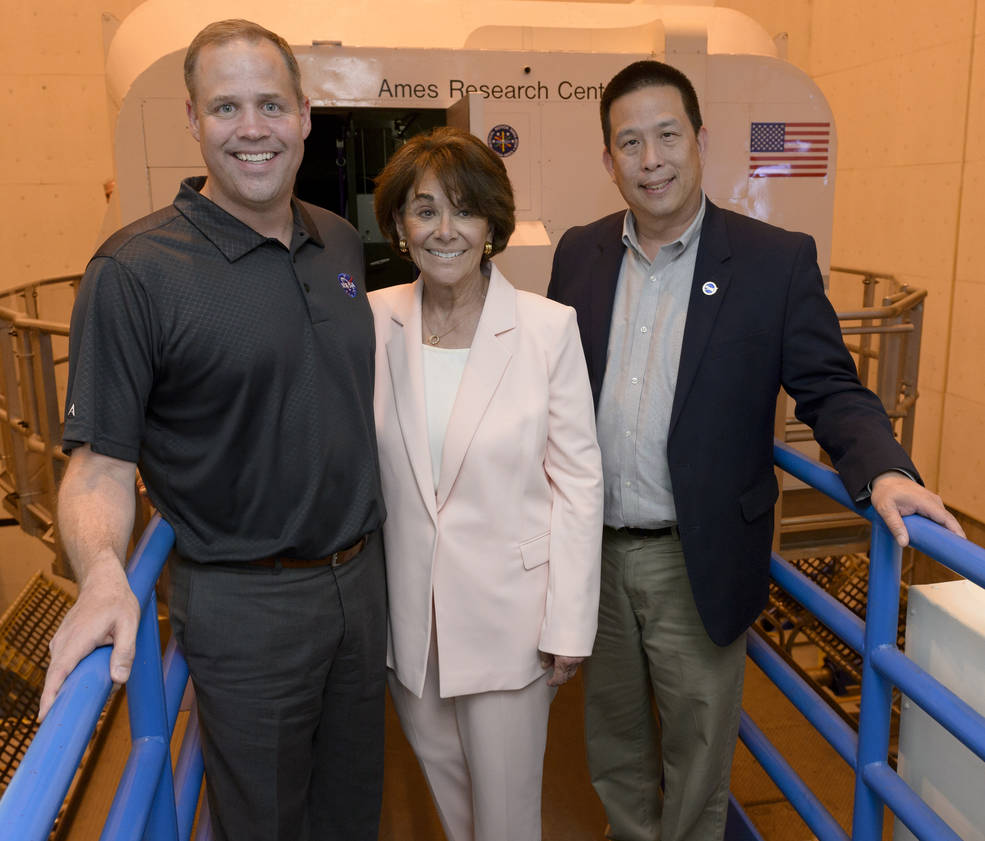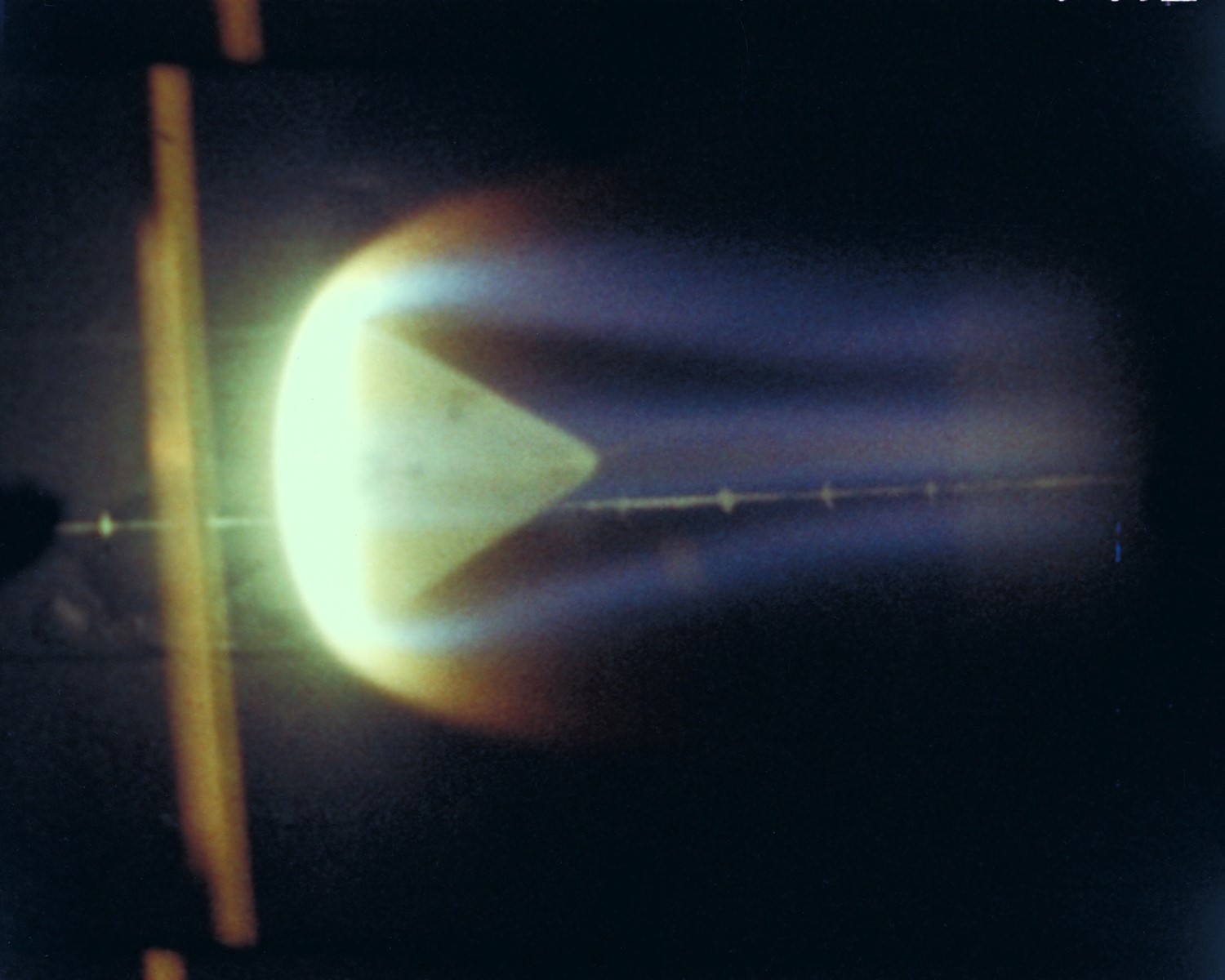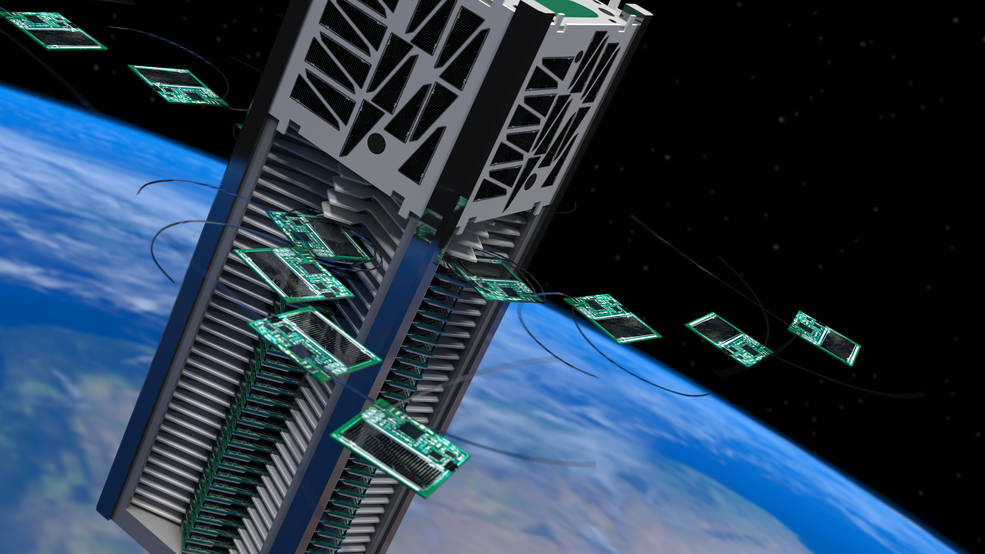June 2019 issue of. Ames' newsletter, the Astrogram
“Flying” a Lunar Lander, Right Here on Earth – Administrator Jim Bridenstine Visits Ames’ VMS
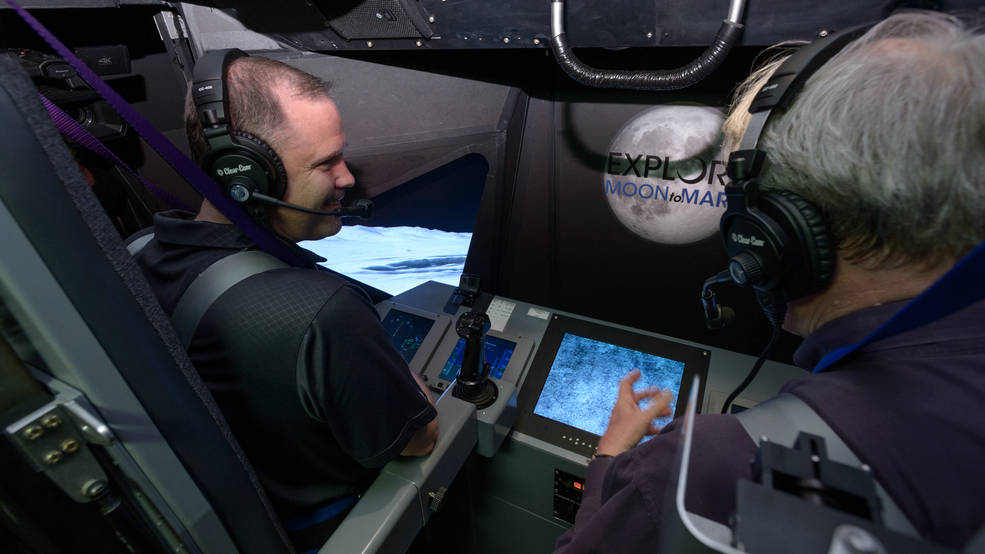
by Abigail Tabor
Before the next people set foot on the Moon, with a planned arrival in 2024, those astronauts will need to learn how to fly the spacecraft they’ll land on the surface. But how do you design controls for a vehicle, then train for a flight that literally can’t happen on Earth?
For cases where pilots should “fly” a vehicle before it can really be flown, you need NASA’s Vertical Motion Simulator (VMS). The VMS is the world’s largest motion flight simulator, moving within a ten-story tower at NASA Ames. On Friday, May 31, 2019, NASA Administrator Jim Bridenstine visited the VMS, where he experienced landing a spacecraft on the lunar surface, in a highly realistic simulation.
For full story, see: LunarLanderVMS
What is the Vertical Motion Simulator?
by Abigail Tabor
When the next people to set foot on the Moon are selected, with a planned arrival in 2024, those astronauts will need to learn how to fly the spacecraft they’ll land on the surface. But how do you design controls for a vehicle, then train for a flight that literally can’t happen on Earth? With hardly any atmosphere and only one-sixth the gravity of Earth, the Moon will feel very different to a pilot behind the controls. For this, and many other cases where pilots should “fly” a vehicle before it can really be flown, you need NASA’s Vertical Motion Simulator.
The world’s largest motion flight simulator, the VMS moves within a ten-story tower at NASA Ames. For a given simulation, the VMS motion platform uses one of five interchangeable cabs, which can be configured to recreate the cockpit of any aerospace vehicle – whether it exists today or is being designed for the future.
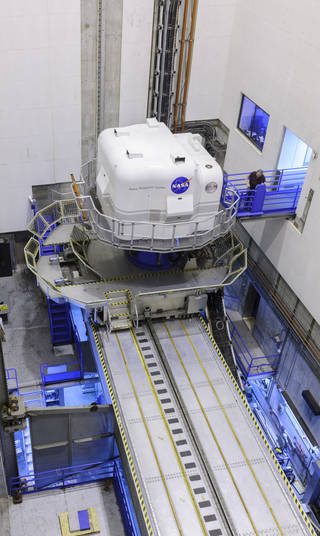
For full story, see: VMS
There and Back Again: How NASA’s Journey to the Moon Paved a Path Home
by Frank Tavares
“I believe that this nation should commit itself to achieving the goal, before this decade is out, of landing a man on the Moon and returning him safely to the Earth.” When President John F. Kennedy declared this to Congress in May 1961, humans had barely brushed past the outer edge of Earth’s atmosphere.
Only a month earlier, the Soviet Union sent the first human to space, while America’s furthest foray at that time was Alan Shephard’s 15-minute flight that fell short of entering Earth’s orbit. Between that history-making speech and Neil Armstrong’s first step on the lunar surface in 1969 is the story of how NASA ensured our voyage to the Moon had a way to get back home.
For full story, see: JourneytoMoon
Look, No Hands! NASA’s First Astrobee Robot “Bumble” Starts Flying in Space
On June 14, 2019, a robot named Bumble became the first Astrobee robot to fly under its own power in space. Astrobee is a free-flying robot system that will help researchers test new technologies in zero gravity and perform routine work alongside astronauts aboard the International Space Station. Robots that can operate on their own in space, such as Astrobee, can be caretakers for NASA’s lunar gateway and will play a significant part in NASA’s future missions to explore the Moon and Mars.
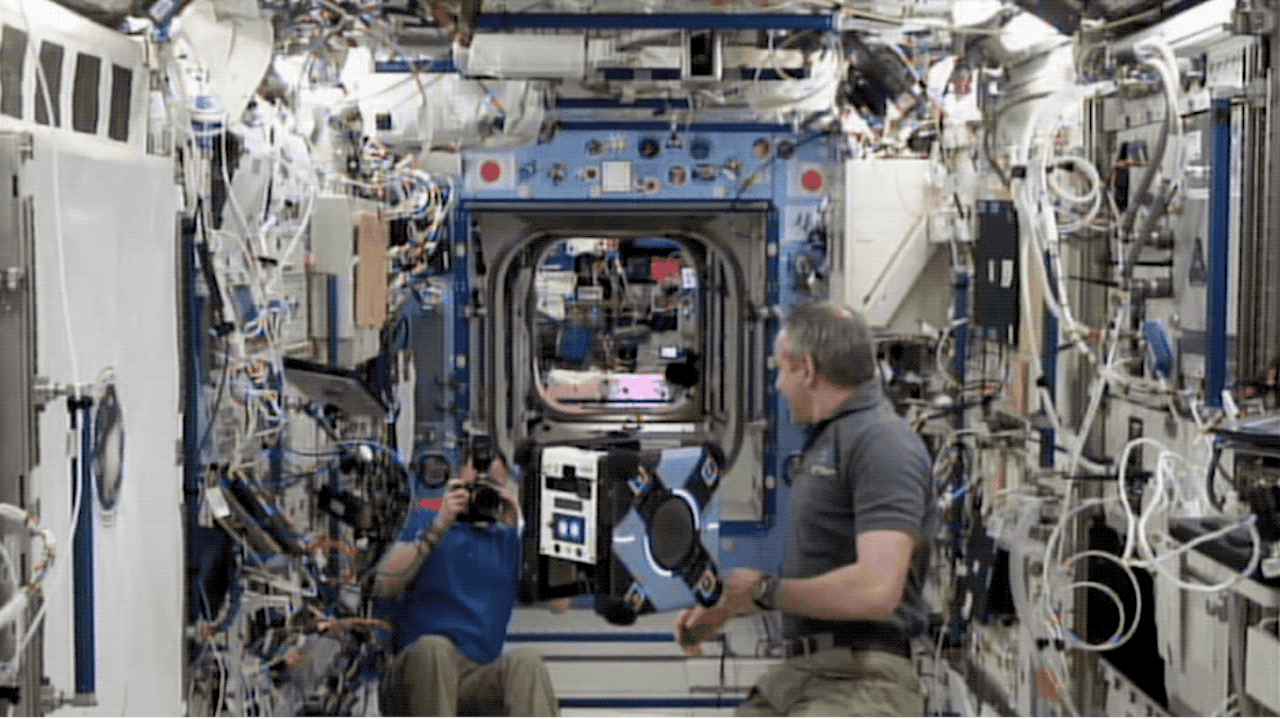
For full story, see: AstrobeeFirstFlight
Small Satellites Just Got Even Smaller with KickSat-2
by Frank Tavares
Revolutionary technology often comes in small packages. CubeSats – shoebox-size satellites – transformed what kind of science and computing we could accomplish in orbit around Earth and other planetary bodies. Now, one particular CubeSat project will usher in the next evolution of satellites. KickSat-2 is a project to demonstrate the viability of truly tiny satellites, called ChipSats or Sprites.
On March 18, 2019, more than 100 of these centimeter-scale spacecraft successfully deployed from the KickSat-2 satellite, with the first signals received the following day. The successful deployment of these Sprites demonstrates that this technology will soon be ready to carry future missions into Earth’s orbit and beyond at a much lower cost than ever before.
For full story, see: KickSat-2
Tunguska Revisited: 111-Year-Old Mystery Impact Inspires New, More Optimistic Asteroid Predictions
by Kimberly Ennico Smith
Every single day, many tons of tiny rocks – smaller than pebbles – hit the Earth’s atmosphere and disintegrate. Between frequent shooting stars we wish on in the night sky and the massive extinction-level asteroids that we hope we never see, there is a middle ground of rocks sized to make it through the atmosphere and do serious damage to a limited area. Now, new research from NASA indicates that the impacts of these mid-size rocks may be less frequent than previously thought.
The research revealed that such relatively small but regionally devastating impacts happen on the order of millennia – not centuries, as previously thought. In addition, the new research has pushed forward our knowledge about the complex processes that determine how large rocks from space break up when entering Earth’s atmosphere.
This new research was inspired by a workshop held at NASA Ames and sponsored by the NASA Planetary Defense Coordination Office. Their results are published in series of papers in a special issue of the journal Icarus. The theme of the workshop: reexamining the astronomical cold case of the 1908 Tunguska impact event.
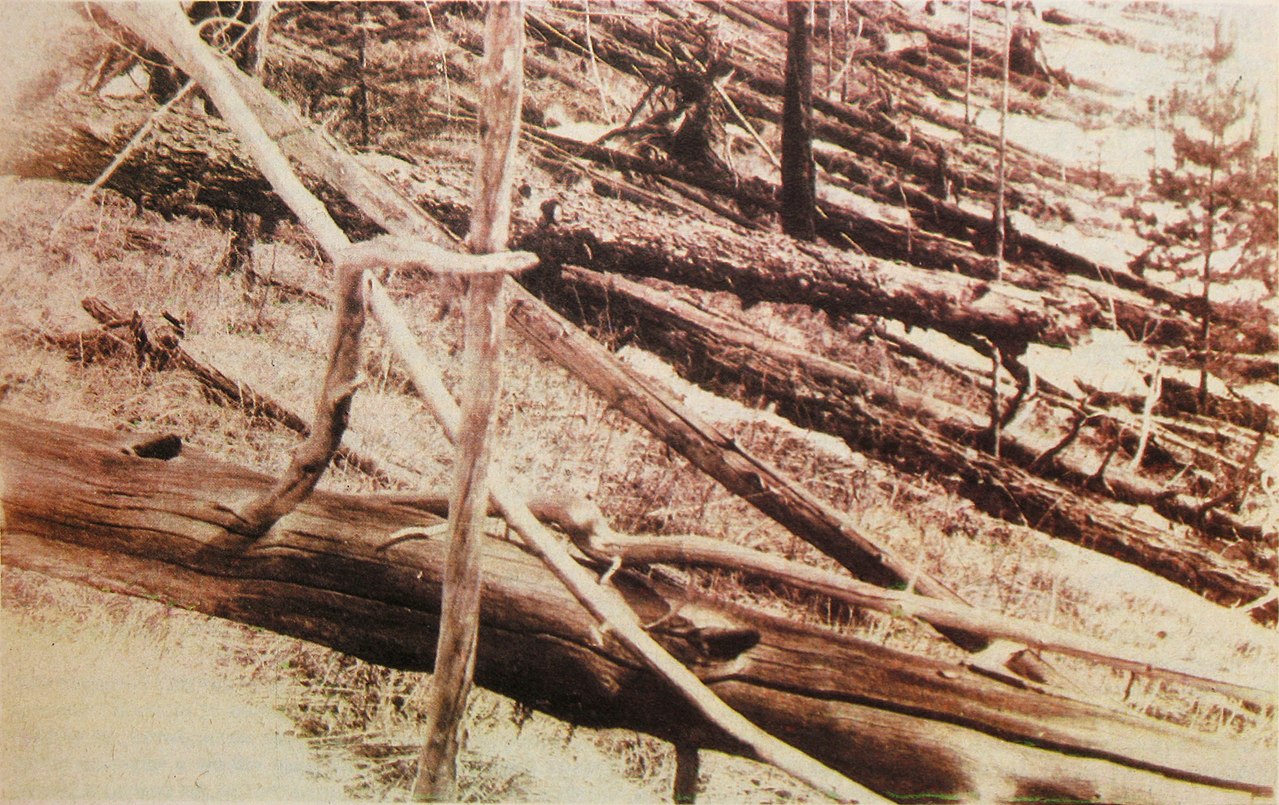
For full story, see: Tunguska
Solar Activity Forecast for Next Decade Favorable for Exploration
by Abigail Tabor
The last astronauts of the Apollo program were lucky. Not just because they were chosen to fly to the Moon, but because they missed some really bad weather en route. This wasn’t a hurricane or heat wave, but space weather – the term for radiation in the solar system, much of which is released by the Sun. In August 1972, right in between the Apollo 16 and Apollo 17 missions, a solar storm occurred sending out dangerous bursts of radiation. On Earth, we’re protected by our magnetic field, but out in space, this would have been hazardous for the astronauts.
The ability to forecast these kinds of events is increasingly important as NASA prepares to send the first woman and the next man to the Moon under the Artemis program. Research now underway may have found a reliable new method to predict this solar activity. The Sun’s activity rises and falls in an 11-year cycle. The forecast for the next solar cycle says it will be the weakest of the last 200 years. The maximum of this next cycle – measured in terms of sunspot number, a standard measure of solar activity level – could be 30 to 50 percent lower than the most recent one. The results show that the next cycle will start in 2020 and reach its maximum in 2025.

For full story, see: SolarActivityForecast
Magnetic Field May Be Keeping Milky Way’s Black Hole Quiet
by Kassandra Bell
Supermassive black holes exist at the center of most galaxies, and our Milky Way is no exception. But many other galaxies have highly active black holes, meaning a lot of material is falling into them, emitting high-energy radiation in this “feeding” process. The Milky Way’s central black hole, on the other hand, is relatively quiet. New observations from NASA’s Stratospheric Observatory for Infrared Astronomy, SOFIA, are helping scientists understand the differences between active and quiet black holes.
These results give unprecedented information about the strong magnetic field at the center of the Milky Way galaxy. Scientists used SOFIA’s newest instrument, the High-resolution Airborne Wideband Camera-Plus, HAWC+, to make these measurements
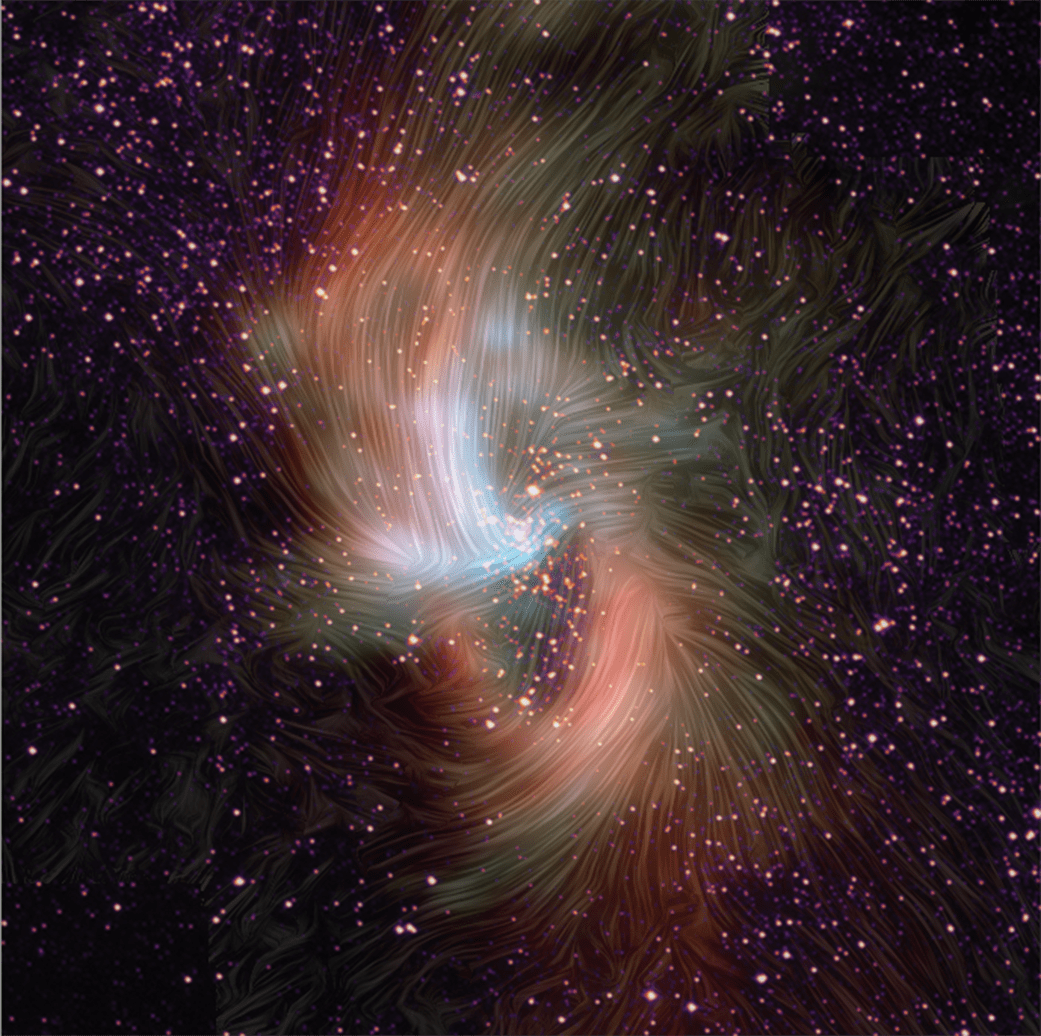
For full story, see: MilkyWaysBlackHole
NASA’s Chief Scientist, James Green, Discusses the Artemis Program

Buffington Discusses Telling NASA’s Story During Brownbag Lunch Meeting
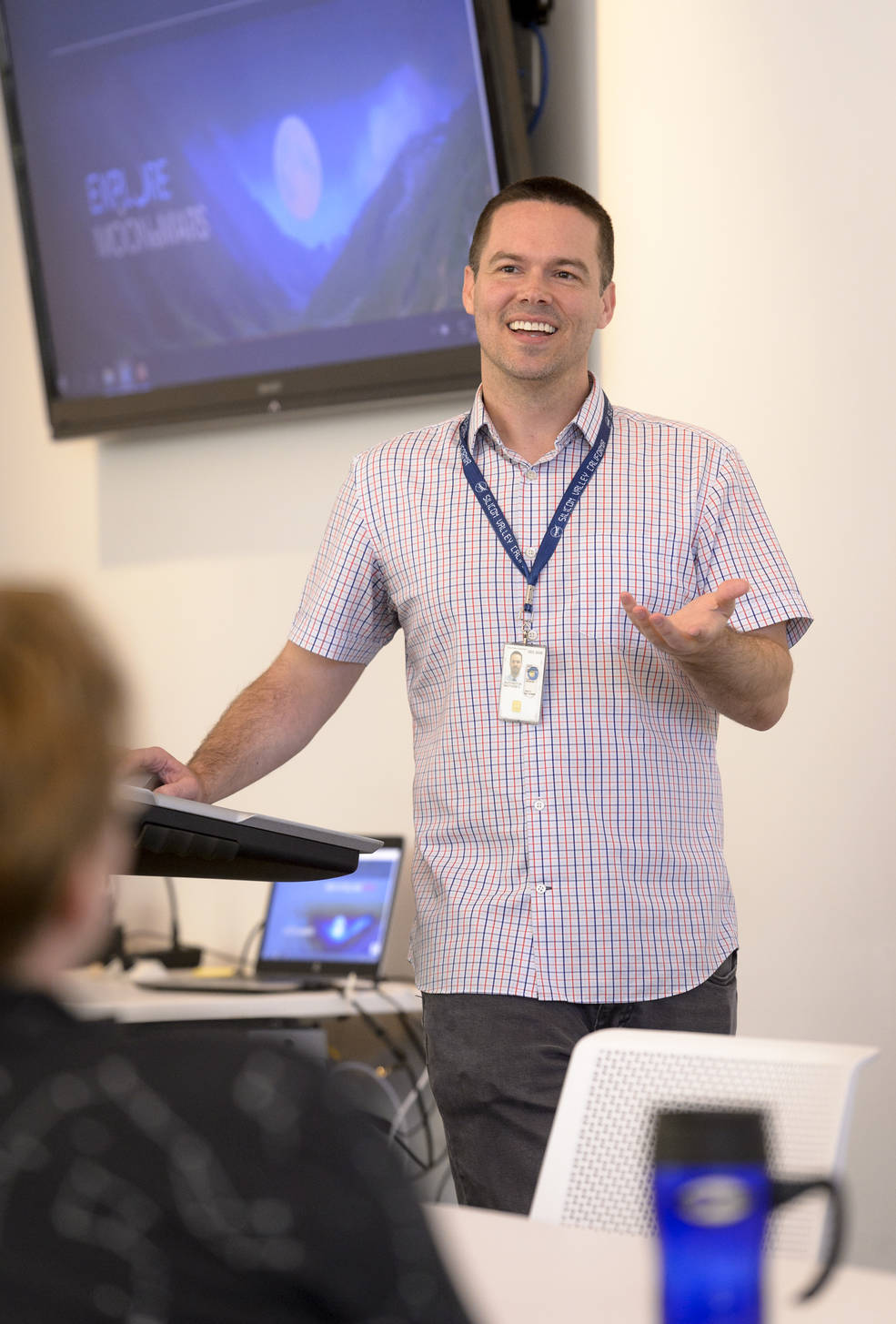
Simulations Give NASA Code Green Light for Space Launch System Testing
by Katharine Pitta
A team from NASA’s Marshall Space Flight Center has for the first time successfully completed a series of proof-of-concept tests to accurately model and predict the complex environment around the mobile launcher during ignition. The mobile launcher, the ground structure used for Space Shuttle Program, will be used to assemble, process and launch the agency’s next-generation Space Launch System (SLS) for missions to the Moon, Mars and beyond. Using NASA Marshall’s workhorse computational fluid dynamics (CFD) flow solver, Loci/CHEM and the agency’s powerful Pleiades supercomputer at NASA Ames, CFD experts were able to validate the solver’s accuracy using high-speed video and pressure data gathered from previous launches during the space shuttle era.
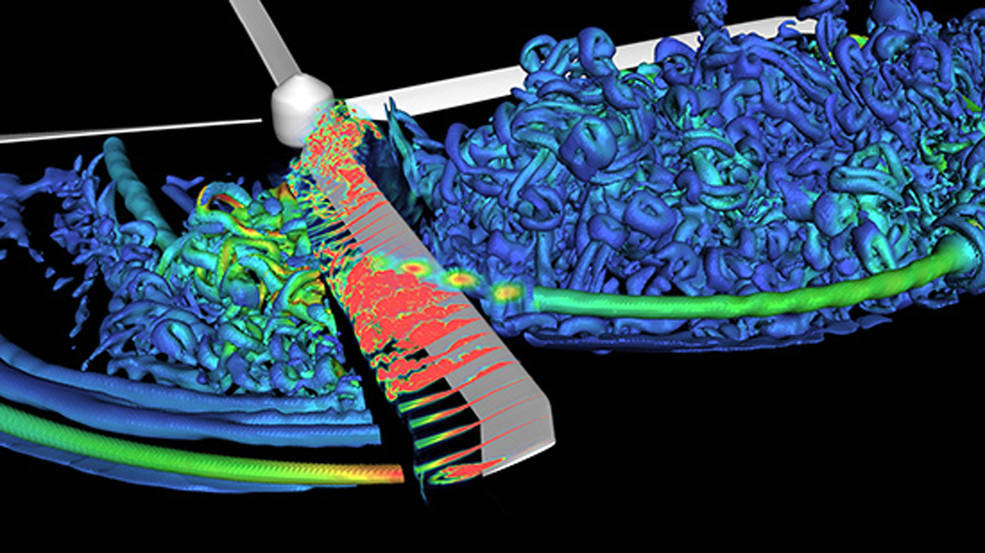
For full story, see: SimulationTesting
Astrobee Facility’s Current Status Discussed During Early Career Network Seminar
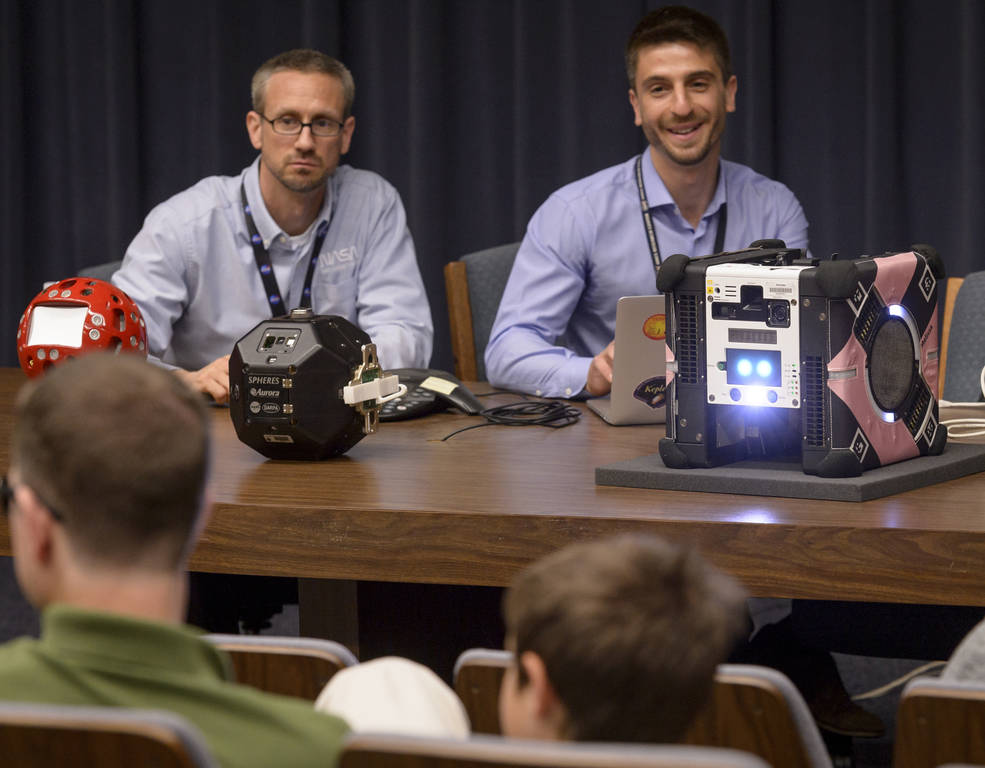
SSERVI/SF Consulate Host Planetary Science Symposium



